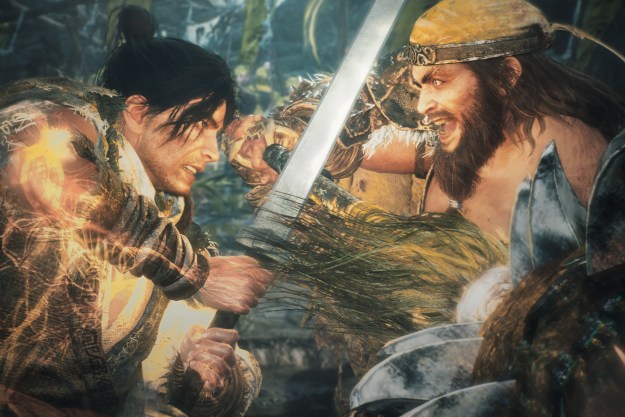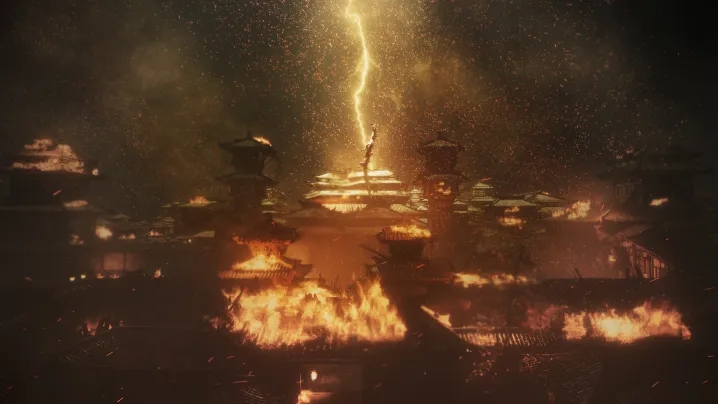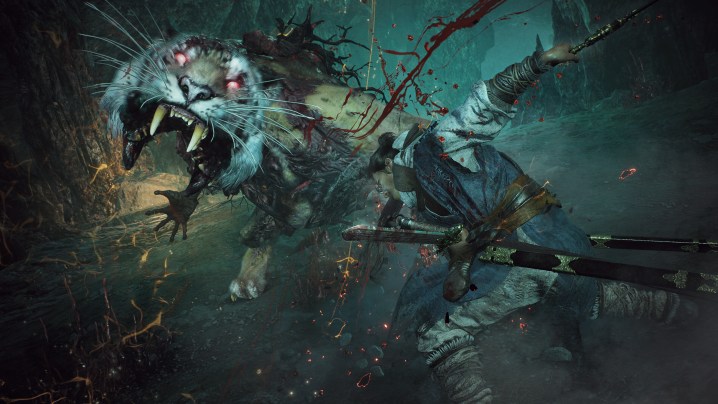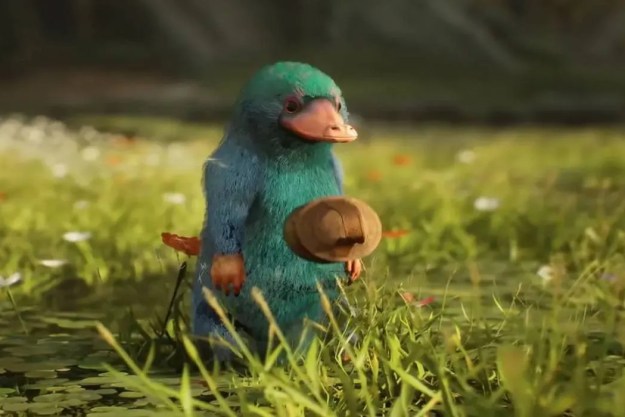
“Wo Long: Fallen Dynasty is a thoughtfully constructed Soulslike that makes thoughtful use of its Chinese setting.”
- Excellent Chinese setting
- Memorable bosses
- Rewarding, satisfying combat
- Creative spins on the Souls formula
- Great customization options
- Frantic camera
- Inconsistent arena sizes
- Some performance issues
It’s impossible to overstate the influence FromSoftware’s Dark Souls series has had on the video game industry, something that’s once again made clear with the arrival of Wo Long: Fallen Dynasty. The new action RPG joins a long list of “Soulslikes” that emulate FromSoftware’s punishing, yet satisfying difficulty while putting their own spin on the formula. Want a Soulslike game set in a sci-fi universe? Play The Surge. Do you like anime? Code Vein is the game for you. Ever wanted to put Pinocchio in the world of Bloodborne? Weird, but Lies of P is for you.
That trend took a notable turn in 2017 when Koei Tecmo and Team Ninja released Nioh, a Soulslike game that followed Irish sailor William Adams, who was inspired by the real-life figure. Considering that it’s one of the more well-received non-FromSoftware Soulslikes, it makes sense that Team Ninja would want to continue down that well. Wo Long gives the studio a chance to hone its craft further, sharpening its approach to a genre that’s dominated by one big boss.
That’s a smart move. Wo Long: Fallen Dynasty has all of the hallmarks of the genre, with a blistering difficulty curve and rewarding combat. Though it may not revolutionize the genre and comes with its own technical frustrations, it’s clear that Team Ninja gets what makes a great Soulslike and isn’t just copying another studio’s homework.
Dark Souls — but in China
Wo Long: Fallen Dynasty takes place in China during the Later Han Dynasty. A substance called Elixer has been sought by the rulers throughout the land because it is said to grant eternal life. A mysterious, but evil Taoist will stop at nothing to create the most potent Elixer to become immortal. The player character is a militia member who becomes entangled with the Taoist’s plans and has to put an end to his rampage by fighting demons and monsters along the way.
It’s a fun approach to historical fiction — similar to Like a Dragon: Ishin! — featuring characters inspired by real-life figures such as Chinese military warlords Cao Cao and Sun Jian. Taking some creative liberties with Chinese history, Team Ninja infuses the time period’s political backdrop with magic and demons.

Unlike the cryptic storytelling of Dark Souls and Elden Ring, the dialogue in Wo Long is much more straightforward, and as a result, it’s easy to follow what’s happening. All of the main characters and warlords interact with each other, creating a real sense of camaraderie between them on a high-stakes journey.
Wo Long features Japanese and English voice-over options, but the Chinese dub gives the game an added layer of authenticity that immersed me in the setting more naturally. It’s aslo heartening to see the other options handled with a bit of sensitivity as well. In particular, I appreciate the English dub as the voice actors correctly pronounce the characters’ Chinese names with their appropriate tones. It’s a little touch that helps Team Ninja stay true to its setting.
Wo Long’s Chinese setting isn’t a simple backdrop or skin that goes over the typical Dark Souls formula.
There’s a huge diversity of different monsters to fight, from huge, ferocious tigers to imposing ogres. The game’s creatures and bosses are based on Chinese mythology, and the development team took those ideas to create some wildly memorable designs, especially for bosses. They include a giant tusked creature reminiscent of Horizon Forbidden West’s Tremortusk and a voluptuous snake lady based on the Chinese mother goddess, Nuwa.
Wo Long’s Chinese setting isn’t a simple backdrop or skin that goes over the typical Dark Souls formula. The game’s story, characters, enemies, and lore all take inspiration from China’s rich history. This also isn’t Koei Tecmo’s first foray into Chinese mythology. The studio is widely known for its hack-and-slash Dynasty Warriors franchise, which is based entirely on the Three Kingdoms period of China. With the studio’s historical expertise guiding the journey, Wo Long engages with hits historical subject matter in a meaningful way that sets it apart from other Soulslike games.
Exploring ancient China
Wo Long: Fallen Dynasty‘s core gameplay loop will come as no surprise to anyone familiar with the genre. It’s an action RPG where players traverse different areas, fight enemies along the way, and eventually reach a brutally difficult boss fight at the end of each level. Players will surely die dozens of times, but like any Souls game, it’s all about learning a boss’s particular attack patterns and understanding how to deal with them. There’s an overwhelming sense of satisfaction when you finally take them down.
While that’s a boilerplate explanation that could be applied to most Souls games, Wo Long does differentiate itself in a number of ways. That’s especially apparent in its Morale Rank system. As you enter new areas, your Morale ranking starts at 0. As you make your way through and kill enemies, Morale increases. A higher Morale Ranking results in enemies dropping better loot, increasing your damage, and giving you access to more powerful magic spells.

However, if you die, then you lose a portion of your Morale, and the only way to get it back is to kill the monster that killed you. That particular monster will gain that Morale boost, making it harder to take down. That creates a devilish risk and reward dynamic that sets it apart from the genre-standard process of retracing your steps to pick up lost experience at the site of your last death. Is it even worth going back to regain my Morale from that enemy now that it’s stronger? Should I just move on and build up my Morale again elsewhere? Those questions are entirely new for the genre, bringing the kind of twist it needs to feel fresh.
That idea encourages exploration too, as you can limit the amount of Morale you lose by finding Marking Flags and supplanting your own flag into them. The big ones act as save points and raise your minimum Morale Rank floor permanently. Taking the time to find most, if not all, flags in an area makes a monumental difference during boss fights. At one point, a boss was completely wiping me out with one single attack when my Morale floor was at nine. I went back to find any remaining Marking Flags I could and raised my floor to 15, which then drastically improved my survivability because I took less damage. This won’t completely undermine the game’s difficulty, but it gives you a glimmer of hope that you can overcome the boss battle over the course of dying over and over again.
Wo Long makes a lot of impactful changes to the genre …
Another notable difference compared to the genre is that the game features AI companions here and there, including Sun Jian, Cao Cao, and more. For a game as difficult as Wo Long, it’s nice to have someone helping out to make that journey feel a bit less lonely. Companions can make or break boss battles as well; they can become useful distractions for a boss’s attacks, giving players an opening to heal up. It was always a triumphant relief when my partner managed to inflict that last bit of chip damage needed to take a tough boss down.
Boss fights do suffer from a consistent issue: arenas are inconsistently sized. In my battle with the aforementioned Tremortusk-like boss, I felt like the arena was entirely too small for me to avoid some of its high-speed, head-on charges. In another fight, I was in a narrow hallway where I felt like I didn’t have much room to maneuver around a gigantic boss. Other instances had me fighting human-sized enemies in massive rooms that had more space than I’d ever need. I also encountered some frame rate hiccups and performance issues during boss battles that momentarily stopped my heart. Being able to react in a split second is important, and if the game’s performance drops, then that could impede your own.

All of those gripes, and more, can become a problem with some of Wo Long’s larger bosses. When my back is against the wall and the boss closes in on me, the camera tends to take on a mind of its own. It becomes erratic and obscures my view. In high-intensity fights where one hit means the difference between life and death, not being able to discern what’s going on is incredibly frustrating. Camera issues like this have long been a weakness of the series, as even games like Elden Ring suffer from similar problems. Wo Long makes a lot of impactful changes to the genre, but that’s one area where I wished it would innovate rather than taking FromSoftware’s lead.
Nioh and Sekiro’s love child
Though Wo Long will be broadly compared to the Souls series at large, it has more specific DNA. Traces of Nioh course through its veins, but it also takes notes from Sekiro: Shadows Die Twice. Both influences are apparent in their traversal mechanics, which sit somewhere between them. Movement is very grounded like Nioh but has instances of verticality like Sekiro. I’m able to get the drop on unsuspecting enemies from above if I position myself correctly, but there isn’t a mechanic like the grappling hook in Sekiro that lets me reach towering heights.
All of those extra touches bring more RPG flair to Wo Long …
Wo Long retains the fast-paced combat of both games, but it emphasizes parrying enemy attacks much like Sekiro. When an enemy glows red, it will unleash an unblockable attack. However, by parrying it, I can automatically initiate a counterattack and break parts of their Spirit Gauge, which acts similarly to a typical stamina meter. Once completely broken, an enemy is wide open for a critical strike, depleting a large chunk of their HP. That creates a combat flow that rewards patience and striking at the right time.
Unlike Sekiro, though, Wo Long offers a variety of different weapons to wield such as katanas, clubs, and scimitars. This makes the game fall more in line with Nioh and Dark Souls, providing more room for playstyle customization. Weapons can be upgraded with materials found throughout the game too, adding another RPG layer on top of combat, though Wo Long doesn’t have nearly as big of a loot issue as Nioh did. New items and weapons are found at a steady pace instead of dropping like candy every time a regular enemy dies, making inventory management much more, well, manageable.

In traditional Soulslike fashion, Genuine Qi acts as a stand-in for experience points and are used to level up and increase stats. They’re split into five different virtues based on the classical Chinese elements: Fire, Wood, Metal, Water, and Earth. Increasing them affects different attributes. For example, the Earth virtue affects equipment weight when wearing armor, and the Water virtue impacts how stealthily players can sneak up behind enemies and inflict a critical backstab. All of those extra touches bring more RPG flair to Wo Long, encouraging the idea of builds that feel unique to each player.
Wo Long: Fallen Dynasty lands in a happy medium for the Soulslike genre. It has enough mechanics to stand out from the typical FromSoftware disciple, but it’s still familiar enough for veterans of the genre. It isn’t groundbreaking, but its difficulty and the satisfaction of overcoming obstacles still make for a fun (and frustrating) experience. Pair that with a thoughtful use of Chinese mythology that sets it apart from any other game on the market, and you’ve got another strong Soulslike to bang your head against until FromSoftware unleashes its next epic.
Wo Long: Fallen Dynasty was reviewed on Xbox Series X. It will also be released for PC, PlayStation 4, PS5, and Xbox One on March 3.
Editors' Recommendations
- Wo Long: Fallen Dynasty release date, trailers, gameplay, and more
- Wo Long: Fallen Dynasty has a new demo. Here’s where and when you can play it
- The Lords of the Fallen revives a long-dead Soulslike sequel
- 'Nioh' is coming to PC in November with all three expansions
- Team Ninja reveals 'Nioh' DLC schedule includes both free and paid content




